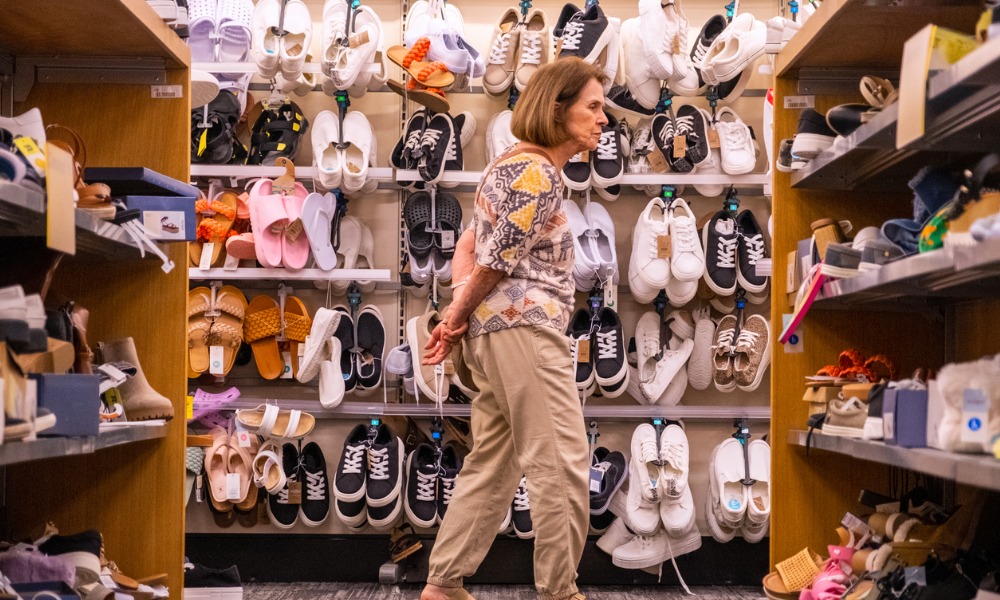Kiwis are spending more, but getting less, data shows

The Reserve Bank of New Zealand signalled that its latest 25-basis-point hike was the last, as it expects inflation to moderate below 5%pa by the end of this year, as rapidly higher debt-servicing costs drag down spending.
But just what does a slowdown in household spending really look like, and which areas of the economy are taking the hardest hit?
Spending more, getting less
Core retail sales volumes, which strip out the more volatile fuel and motor vehicle retailing and adjusts for inflation, have been on a downward trajectory for more than a year. In the three months to March, core retail volumes fell 4.6% from their December 2021 quarter peak, in seasonally adjusted terms. The same period also saw the value of quarterly core retail sales climb 7.1%.
“These figures show the central phenomenon happening now in the retail space: consumers are spending even more dollars at the till, but getting fewer actual goods and services than they did last year as the spending bang-for-buck erodes,” said Sabrina Swerdloff, Infometrics economist.
The industries selling more discretionary goods were experiencing the largest downturns in volumes, the Stats NZ retail data showed, with electrical goods the hardest hit, falling 30% peak-to-trough between the December 2021 and March 2023 quarters. This was followed by non-store retailing (20%), hardware supplies (20%), recreational goods (12%), and furniture and homeware (12%).
Over the same period, sales volumes in food and beverage services and accommodation increased 27% and 16%, respectively, supported by the return of international tourism. The increases in spending volume came despite price increases of 8.8%pa and 23%pa for the industries, respectively, Swerdloff said.
Department store spending, meanwhile, rose nearly 20%, which the economist said was at odds with what Informatics have expected. But with electronics and department store spending combined, it was 12% lower over the comparison.
Clothing and footwear spending has continued on an upward trend in recent years, which according to Swerdloff perhaps highlights that, although the items are less essential than food and fuel, they’re more essential than electronics, DIY, and other spending options.
Infometrics noted that these industries are not necessarily those with the most drastic price pressures.
“Price increases have been much more acute in supermarkets (11%pa), and although the price of fuel has declined from the March 2022 quarter, there will be an increase of almost 30c/L from July onwards due to the resumption of the full fuel excise duty,” Swerdloff said.
“Because of the essential nature of these goods, demand for food and fuel is relatively price inelastic, meaning households are less inclined to change the actual amount that they purchase when the price increases.”
Online retail taking a short-term hit
Despite inflation and interest rates significantly impacting consumer spending, online shopping has continued to grow in popularity.
Online-only spending had been growing as a proportion of total retail spending since COVID-19 broke out.
“Having averaged around 13% of spending over the two years before COVID-19, online spending spiked to 23% during the original Level 4 lockdown, but then retreated to more familiar territory,” Swerdloff said. “Since the start of 2022, online spending has made up around 16% of total spending according to Datamine’s Retailwatch data.”
In the six months to April 2023, the industries that saw the largest proportion of online retail were travel and accommodation (60%), recreation (48%), furniture and homeware (23%), clothing and footwear (18%), and books and stationery (16%).
“Despite an overarching trend of increased online retail, online-only sales have borne the largest declines as we enter a more subdued period of consumer activity,” Swerdloff said.
Most industries saw the level of online spending in the April quarter fall from the same period in 2022, with the largest declines in books and stationery (down 38%pa), furniture and homewares (36%pa), liquor retailing (36%pa), clothing and footwear (32%pa), and health goods and services (24%pa).
“Apart from travel and recreation, which are bolstered by the return of tourism, the industries where online retail declined the most are those that sell more discretionary items,” Swerdloff said. “This trend is especially concerning for books, clothing, and homeware retailers, which have a high proportion of online retailing.”
Although travel and accommodation saw considerable increases in spending, it is also coming off a low base, given that travel activity wasn’t fully operational in early 2022.
“To put the nearly 68%pa increase of this group in context, online spending for travel and accommodation in the three months to April was only 36% higher than pre-pandemic levels, compared to a 60% rise in total online retail spending,” Swerdloff said.
Infometrics said that looking at the data from a different perspective supports the view that online spending is typically more discretionary than in-store.
“Online spending has declined much more severely than in-store across most industries,” Swerdloff said. “Overall, total online retail spending increased just 5.0%pa in the three months April, compared to an instore spending increase of 7.6%pa."
Infometrics said there was clear evidence that households’ shopping appetite was easing as budgets become tighter – that given falling retail volumes, higher lending arrears, and weak growth in online spending.
“Electronic goods, hardware, homeware, clothing, and books retailers, in particular, are navigating the challenge of high input costs and a consumer base that reacts strongly when those costs are passed on,” Swerdloff said.
Infometrics expects household spending growth to turn negative over 2023 and gradually begin to bounce back late next year.
“The full effect of higher interest rates has yet to work its way entirely through the economy, as labour market indicators are still running hot,” Swerdloff said. “However, given the Reserve Bank’s announcement that the OCR has now peaked, risks around the severity and length of the retail spending downturn might be more finely balanced.”
Use the comment section below to tell us how you felt about this.



